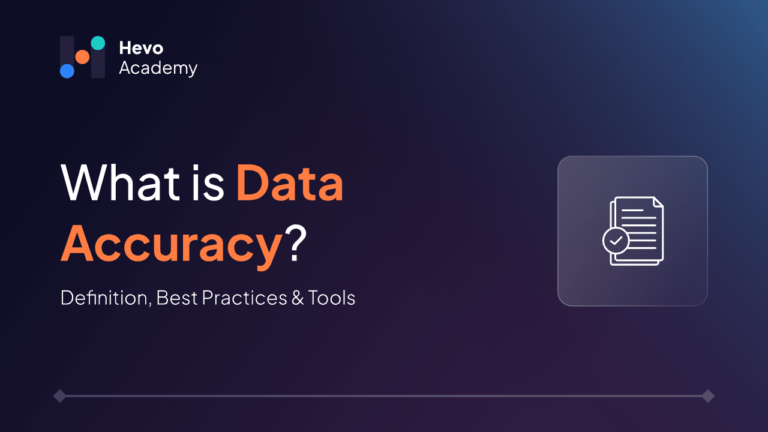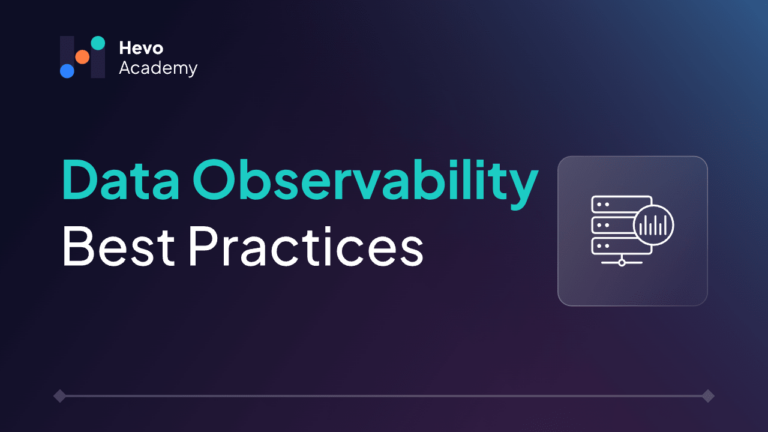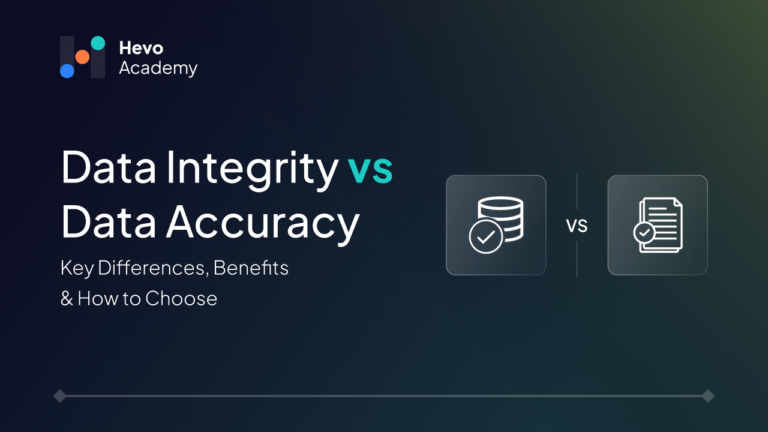Accurate data is essential in today’s data-driven world, as it enables companies to make well-informed decisions, optimize available resources, and improve overall operational efficiencies. On the other hand, inaccurate data may result in poor strategies, operational disruptions, and financial losses. Gartner’s research indicates that companies can waste up to 40% of their time managing issues related to inaccurate data. Ensuring data accuracy is essential for streamlining operations and boosting revenue.
Table of Contents
There are several ways to ensure data accuracy, such as using data validation tools, checking data for inconsistencies and inaccuracies, and using predefined data rules or algorithms. This blog post provides a definition, lists the factors that affect data accuracy, the challenges and strategies to overcome data inaccuracies, and discusses tools and technology.
What is Data Accuracy?
Before we discuss data accuracy, we need to define ‘data’. Data is unprocessed information, facts, or statistics transformed into structured data that can be analyzed and used for any business strategy. For example, a company can use employee records, including email addresses, phone numbers, and seniority levels, which are important for employee benefits and payroll processing.
Data accuracy refers to the degree to which the data represents the true value it is intended to describe. It also should ensure data integrity, which is important for any business as it helps in making strategic decisions. Making any business decisions based on inaccurate data could cost financial loss, resources, and time. Data quality checks are essential for maintaining the integrity and accuracy of information and supporting efficient and effective business operations.
Many times, data accuracy is confused with data integrity, which isn’t correct. Read our blog on data integrity vs data accuracy to get it right.
With no-code data pipelines, Hevo automates data validation and transformation, reducing human errors and ensuring consistency across all sources. This allows data teams to focus on analytics rather than troubleshooting data discrepancies.
Why Hevo?
- Automated Data Validation: Catch inconsistencies early with automated checks.
- End-to-End Data Lineage: Track every transformation step to ensure data integrity.
- Real-Time Data Sync: Get accurate data at your fingertips with real-time syncing across all platforms.
Simplify your data engineering workflow and maintain high-quality, accurate data with Hevo’s robust no-code platform.
Get Started with Hevo for FreeThe Effects of Inaccurate Data on Business Decisions
For example, a marketing company relies on accurate data, which helps identify and understand customer behavior, demographics, and preferences to project better results and increase campaign effectiveness.
- Poor decisions and misguided strategies based on inaccurate data that fail to align with real market needs can lead to profound consequences.
- Data errors in financial data can result in overestimations of expenses.
- ·Inaccurate data might result in lower productivity.
Also Read: Data Quality Checks
Factors That Affect Data Accuracy
Achieving data accuracy is important for maintaining operational efficiency. However, several key factors affect data accuracy, and this can lead to significant issues. Let’s explore some of the aspects that influence data accuracy.
- Data Collection Methods: This method plays a critical factor in data accuracy. Poorly designed surveys, sampling techniques, or data collection tools can lead to misinterpretations, resulting in inaccuracy. For example, a retail shop wants to improve its services, so it does an online survey. The company includes questions like “How satisfied are you with our services?” but fails to denote which services are being referred. This can lead to poor decisions and result in financial loss.
- Data Errors: During manual data entry, such as typographical mistakes (for example, instead of typing “John,” they can accidentally type “Jhon”), transposition errors such as incorrectly swapping a letter or number, forgetting to enter a missed detail or a field, duplication errors, and misinterpretation errors, can affect the overall usability or reliability.
- Integrating data from various data sources or converting data into various formats may result in inconsistencies and errors, compromising the accuracy of the final dataset. For example, if an online store records customers D.O.B (Date Of Birth) in DD/MM/YY format and a retail store uses MM/DD/YY format, merging these datasets can result in mismatches and confusion.
Best Practices to Improve Data Accuracy
- Prioritizing High-Quality Data: The initial step involves assessing the current quality of data, which determines its consistency, redundancy, and integrity.
- Accuracy Target and objectives: Defining clear data accuracy targets helps monitor data progress and identify areas for improvement.
- Data Standards: Setting predefined data governance standards or frameworks improves data quality standards.
- New Technology: Adopting new technology and validation tools is a game-changer for maintaining data accuracy and reducing the risk of human errors.
- Data Quality Audits and Reviews: Systematically reviewing data accuracy improves data integrity over time.
- Data Expertise: Employee training and data expert consultation can make a significant difference. It should cover data entry standards, error detection, and data integrity protocols.
Tools and Techniques for Improve Data Accuracy
In data management, several tools and techniques can help validate data integrity. These include:
- Data cleansing Tools: These tools cleanse irrelevant or corrupted data, and remove duplicates within the datasets. A few examples include IBM InfoSphere QualityStage, Trifacta Wrangler, and RingLead.
- Data Validation Tools: These data validation tools check whether data meets pre-defined data standards and rules before it is used in data analysis or visualizations.
- Data Governance Tools: These tools ensure that data management policies, standards, procedures, security, and compliance are followed.
- Data Enrichment Solutions: Help in collecting data from different sources.
- Data Analytics Tools: These tools help identify data insights through visualizations or graphical representations.
- Data Security Tools: Provide access level authorization to prevent unauthorized modification in data.
- Data Dictionary Tools: With data dictionary tools, you can standardize data terms, ensuring data enrichment, analysis, and security processes rely on a common understanding of the data.
The challenge determines which option best fits your requirements. Below are some of the top available options:
- Informatica IDQ: Informatica Data Quality is a powerful data management tool which can be integrated with Informatica PowerCenter to improve data quality, patterns and remove duplicates.
- Oracle Enterprise Data Quality: This tool provides advanced features such as data cleansing, matching and reporting. It can be easily integrated with Oracle’s ecosystem, and it can support real-time data quality.
- IBM InfoSphere QualityStage: It provides the capability to create and maintain data entities across various data sources while ensuring compliance with predefined standards and rules. Additionally, this tool features error correction, data cleansing and duplication removal.
- Collibra: Leading data governance platform that provides tools for managing data cataloging, stewardship, defining data standards, and compliance.
- Microsoft Azure Purview is a data governance service that enhances data accuracy across diverse data sources. It offers various features, including Data classification, cataloging, and lineage tracking. It also ensures data organization and maintains data integrity and accuracy throughout its lifecycle.
Common Challenges in Achieving Data Accuracy
Maintaining data accuracy requires effective data management, yet it involves several challenges. These challenges may have a major impact on the data’s accuracy and utility. Here, we explore some common obstacles and roadblocks to attaining data accuracy.
How to Deal with Legacy Systems
A legacy system is an outdated software application or old hardware still in use. Many organizations rely on legacy systems as they contain historical data. Maintaining a legacy system is expensive and lacks the capabilities of modern technologies.
- Inconsistency with Current Standards: Data formats used by legacy systems are not compatible with modern standards. This complicates the data migration and data integration process, making it difficult to unify across various data management platforms.
- Limited Support Documentation: Without proper, up-to-date support documentation, the technical team will need to spend a lot of time understanding the system’s configuration and functionality to fix the problem.
- Security Issue: Legacy systems are highly vulnerable to security threats due to outdated software applications and/or old hardware. A lack of contemporary security updates makes the systems more vulnerable to breaches and threats, creating significant risk to sensitive data. This might include a lack of encryption methods, limited monitoring, and a logging system.
Addressing Legacy System Challenges:
- One effective way to improve legacy systems is by slowly replacing and integrating modern software, which can enhance data handling and monitoring capabilities.
- Migrating from an older system to a newer one is a tedious process, including data cleansing, extracting existing data, transforming the data based on the new system’s requirements, and importing the data into the new system.
Managing Large Volumes of Data
Ensuring data accuracy becomes increasingly challenging as organizations gather and analyze vast information. As organizations collect and maintain large datasets, it becomes highly complex to ensure the accuracy of the data. Some of the factors that affect managing large volumes of data include:
- Data Redundancy: This occurs when an organization stores the same data in multiple locations within a system. This impacts data integrity, data management, and the analysis process. An example of redundancy is when a retail company maintains customer information across several storage systems.
- System Overload: Handling and analyzing a large volume of data can overload system performance and lead to data loss. Overloaded systems may struggle to provide reliable data. Setting an infrastructure that can handle large volumes of data is essential for maintaining data integrity and accuracy.
- Data Integrity Standards: Robust data quality standards and frameworks can be implemented to ensure data consistency across all systems. This maintains a clear data guideline to improve data quality and minimize errors.
Distributed computing and cloud-based storage solutions:
- Technologies such as Hadoop Distributed File System (HDFS), Amazon Web Services (AWS), IBM Distributed Computing, Microsoft Azure, and cloud-based storage like Amazon S3, Google Cloud Storage, or Azure Blob Storage offer enough storage to handle large volumes of data volumes without compromising accuracy or performance.
Ensuring Accuracy in Real-Time Data
Many companies struggle to gain business insights from real-time data. Handling large amounts of real-time data requires sophisticated infrastructure and technology, which is why many companies struggle.
- Complex Data Integration: Real-time data is often generated from various sources and has different formats, standards, and structures. Integrating these data into a unified format is a complex procedure.
- Infrastructure Issues: Handling large volumes of real-time data requires advanced infrastructure and technology. Many companies struggle to implement and maintain these systems effectively.
Solutions: By implementing a real-time data analytics and monitoring system, organizations can continuously monitor real-time data streams and gain insights as data flows through the system.
Advanced data analytical tools, including Microsoft Azure Stream Analytics, Apache Kafka, Google Cloud Dataflow, and Tableau, can process data and detect patterns and trends. This approach helps companies address issues before they escalate and maintain the accuracy of real-time data as it is produced.
To Conclude
Accurate data fuels strategic decisions, enhances operational efficiency, and improves customer experience. However, if the data is accurate but lacks other qualities, it is not sufficient for effective business decisions. Organizations can maintain reliable data by addressing challenges like legacy systems, managing large data volumes, and overcoming integration issues while also leveraging advanced tools for validation, governance, and analytics.
Schedule a personalized demo with Hevo for seamless data integration.
Frequently Asked Questions
1. What are the common causes of data accuracy?
Errors, such as typing mistakes or missed fields, occur during the data entry process.
Variation in formats leads to inaccuracy in data. For example, DOB, MM/DD /YY should be used instead of DD/MM/YY.
Poor data transformation procedure, including intensive data mapping technique.
Legacy systems with outdated software applications.
2. How can I verify the accuracy of my data?
You can verify data accuracy by using data validation tools, data quality tools cross-verification, and data audits and reviews.
3. How do data governance platforms contribute to the accuracy of data?
Data governance tools offer an established framework for organizing and managing data across enterprises. Some of the tools: Collibra, Microsoft Azure Purview, Informatica, Snowflake data cloud, and Altan, support accuracy and reliable data management by establishing data formats, stewardship, and compliance.
4. How do I handle and correct inaccurate data once it’s identified?
Determine the source and investigate where and how the error occurred. Once identified, make the necessary corrections in the dataset.
Update documentation or metadata affected by the correction.
Review and notify the stakeholders.
5. What impact does data accuracy have on analytics and reporting?
Data accuracy ensures that insights from analytics are reliable and reflect true patterns, leading to well-informed decision-making.





